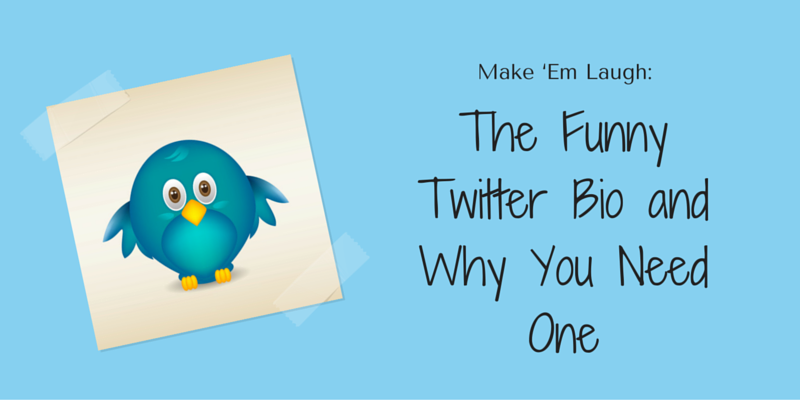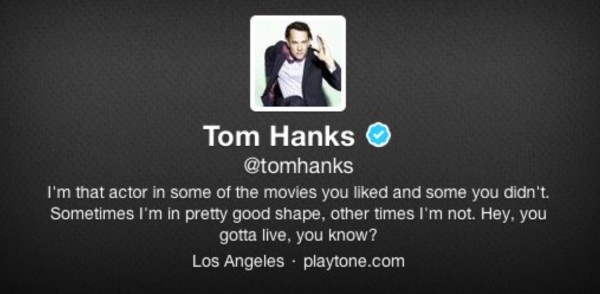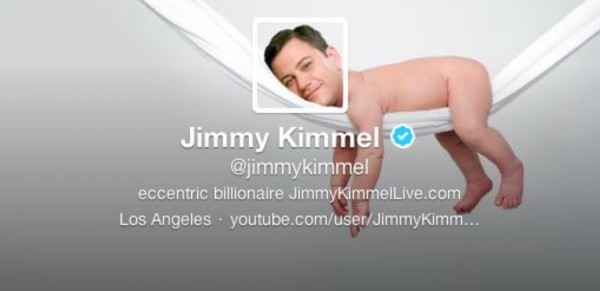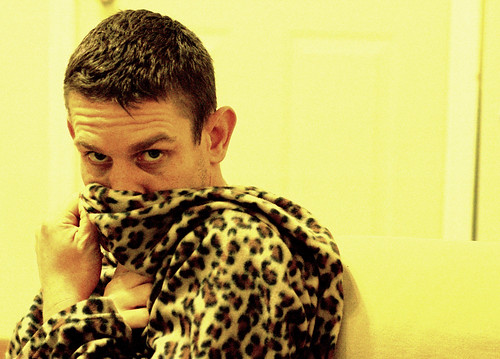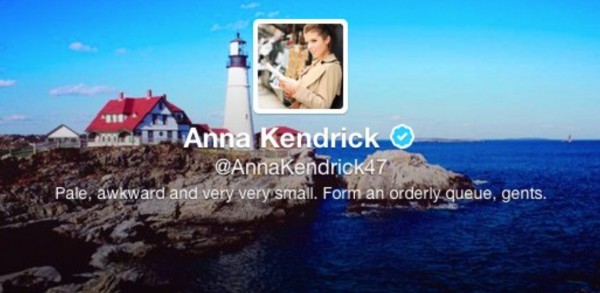We’re all online looking for someone. Our next fan, follower, employee, lover, business partner, critic, cheerleader, investor, mark, or exorcist (that last one is admittedly rather specific to my needs this week).
Everyone’s searching for something. And we’re turning to social media in snowballing numbers to do so. A full 78% of Americans have at least one social network profile in 2016, and there’s currently about 2.2 billion social media users worldwide.
With those kinds of numbers, you’re sure to find what you’re looking for (unless you’re U2, in which case you still haven’t found what you’re looking for). But the onslaught can work against you, too.
How do you stand out in a crowd of 2.2 billion?
You can’t. Not really. But you can work smaller. One platform at a time.
Take Twitter, for example. Good old Twitter (can something started in 2006 really be called “old”?). It’s got a respectable 310 million active users, but that’s a far cry from Facebook’s 1.65 billion. So how do you stand out in a crowd of 310 million?
As Danny Kaye would say, make ‘em laugh. Everyone loves a comedian. And your Twitter bio is the perfect opportunity to give ‘em a chuckle and make a quick connection. Bios have a cap of 160 characters; not a lot, but certainly more than you need to make an impression.
The New York Times called Twitter bios a post-modern art form. There’s a craft to doing them well. And there’s plenty of advice on writing a rockstar bio and ideas to make you unforgettable.
One such suggestion: a funny bio can make you memorable in a sea of similitude.
Why bother?, you ask. Profiles and bios have become the calling card for the digital age. It’s our introduction to someone in our instant and always-connected world. Tools like Followerwonk can specifically search Twitter bios, so make it count. And your Twitter blurb actually appears in search engine results when someone searches for your name. It stays with you like heartburn or a bad taco.
Social media has become our de facto dating service, except we’re looking for more than our next evening out. We’re looking for our next everything. We swipe through profiles at breakneck speed because there are millions of others in our queue. It’s like Tinder on steroids (editor’s note – I have never used Tinder. What’s Tinder? You’re on Tinder!).
To stop from getting swiped left (again, I have no idea what Tinder is nor how it is used), your bio has to jump off the screen in some immediate way. So be funny.
Is humour the only way to get their attention? No. But it is one of the most fundamentally human. Your bio should include some relevant keywords (to target), a hobby or two (to humanize you), your passion (to connect with and excite them), and some random facts (to intrigue them).
And if you can do that while giving them a chuckle, guffaw, giggle, snicker, snort, chortle, or grin, so much the better.
“A person without a sense of humour is like a wagon without springs. It’s jolted by every pebble on the road.” ~Henry Ward Beecher
The Psychology of Humour
But what exactly is funny? There’s no one, unified theory that explains humour, or what we find funny. Yes, there are similarities across language, culture, and time, but there’s no one answer to the question “Is that funny?” People love Carrot Top. And Gallagher. Dane Cook. And Adam Sandler movies beyond the early classics (Happy Gilmore is about as perfect a comedy as you’ll ever find).
Despite the difficulty in nailing it down, humour serves a wide range of purposes in our lives:
- It helps us bond with one another. Is there anything that brings people together better than a hearty belly laugh?
- We use it to ingratiate ourselves to others, and to attract a partner. A sense of humour is typically listed at or near the top of desired characteristics for a mate.
- It releases tension and makes us feel better. Laughter, after all, is the best medicine.
- We use it to entertain, to knock someone down a few pegs, or lighten the mood during difficult times.
- It acts as a coping mechanism.
- The jury is still out in terms of definitive evidence, but laughter and a sense of humour are purported to have a positive impact on our physical and mental health.
- It simply makes life a bit easier to handle. Period. Given the choice of facing the trials and tribulations of living with a smile or a frown, which one would you choose?
“I don’t trust anyone who doesn’t laugh.” ~Maya Angelou
In our private lives and professional dealings, we gravitate towards the “funny” people we encounter. They just seem so grounded. So real. Lacking a sense of humour is viewed as a serious flaw (pardon the pun).
We laugh with family (sometimes we have to lest we lose our minds). We laugh with friends. Heck, we even laugh with strangers (one study found 5.8 instances of laughter amongst strangers for every 10 minutes of conversation). It’s contagious and cathartic to toss your head back and LAUGH…even when laughter seems inappropriate and out of place.
Humorous people are usually bright (it takes wit and creativity to come up with those one liners), confident, good in social situations, able to keep things in perspective, don’t take anything – themselves or life – too seriously, and are never dull or boring. It’s like a friend, partner, or business associate wish list. You want potential clients, customers, and followers to think of you that way. You = funny = smart = confident = able to leap tall buildings in a single bound.
Funny is as funny does. But it’s not all guffaws and chuckles. An Oxford University study discovered remarkable similarities between comedians, schizophrenics, and manic depressives. But it only dealt with professional stand-ups. If you’re the office clown or funniest fella at the lumberyard, you’re probably “okay” (although many people use humour – and especially sarcasm – as a defence mechanism to keep people at arm’s length…just look at Chandler Bing. He was crying out for help, and all we did was laugh at him. For shame!). But why we laugh isn’t really an entertaining topic. Interesting? Sure. But it’s not too funny. It’s enough to know that a) we like to laugh, and b) we like people that make us laugh.
Types of Humour
There’s more than one route to the funny bone. Humour comes in as many variations as people themselves:
- Observational – think Jerry Seinfeld or Ellen DeGeneres. Let’s all laugh at the ridiculousness of life!
- Dark – laughing at tragic, naughty, or taboo subjects in order to deal with them and lessen their power over us
- Put-Down – insults and zingers directed at others
- Hate-Me/Self-Deprecating – making fun of yourself
- Sarcasm – using irony to mock and show contempt for someone or something
- Wordplay and Witticisms – Puns, and the exploitation of subtle nuances and ambiguities in language
- Lowbrow (blue and bathroom) – jokes about farts, body functions, and more gross stuff
- Deadpan – very dry, serious delivery of silly jokes and one-liners
- Satire, parody, farce…
- Physical – slapstick, falling down, tripping…think The Three Stooges. Or Three’s Company. Or The (Three) Marx Brothers (Hmmm…what is it about three that’s so funny?)
Some psychologists take it a step further and group humour in four broad categories depending on the intention:
- Affiliative Humour – jokes and observations that try to bring people together. Light-hearted and positive, this style makes us feel good about the universal comedy we call life.
- Aggressive Humour – Insults, put-downs, ridiculing, and teasing aimed at an individual or group of people.
- Self-enhancing Humour – jokes intended to laugh at yourself in a good-natured manner in order to cope or deal with a situation (the “if I didn’t laugh I’d cry” mentality).
- Self-defeating Humour – insulting and attacking yourself in an aggressive and negative way.
Others list seven types (including malicious, the giggles, jokes, and satire), but it doesn’t really matter what number you attach to it. Humour is all around us. We like it. We seek it out. We look for it in others. But it has to be the right kind of humour. Affiliative? Yes. I want to work with that “funny”. Aggressive? No, I do not need that “funny” in my life. A freelance writer good with puns? I like it. A sarcastic therapist? No. Just no.
And that brings us back to Twitter.
Humour and the Twitter Bio
There’s a bit of a split consensus when it comes to using humour in your Twitter bio (or any other platform, for that matter).
On one side, we have the proponents. They recognize the appeal of humour. That it draws us in. That we like to see a sense of humour on full display when we pick a new friend, or employee, or partner (business, personal, or otherwise). And isn’t that kind of the point of social media?
On the flip side, we have the detractors. They enjoy a good knock-knock joke as much as the next guy or gal, but they believe your Twitter bio is not the place for it. Ask yourself: what’s the purpose of your profile bio? Most likely, it’s there to entice and titillate (<snicker>…that’s a funny word). To get people to click on the “Follow” button and add to your growing army of devoted fans. A “funny” bio doesn’t necessarily provide the information they need to make that decision…and so they leave. Follower lost. Opportunity blown.
Funny works unless it doesn’t. If the whole point of your Twitter profile is to get followers, and to get get them to do something (click-through to your website, message you about a project, download your ebook, whatever), then it might not be the best choice. It can backfire if it reveals nothing: people will move on after smiling or laughing at your clever little blurb, and that gets you nothing. They don’t have the time or patience to investigate who you are and what you’re about.
Funny, it would seem, works best when you’re already a known commodity. Like Tom Hanks. Or Conan O’Brien.
But in an arena like Twitter – where the average user has just 208 followers – most of us are not well known. So what’s a Twitter-er to do?
Be funny anyway. Life’s too short. But it does come with a caveat: as much as we love humour and the funny folk that walk among us like regular mortals, it only works if it’s appropriate to your industry and objective. Be clear on that, and exactly what you’re trying to accomplish.
A funny bio for a digital marketer? I’m in. A funny bio for a funeral director? For the love of god, no. Bad dog!
How to Put the FUN Back into the Function of Your Bio
See what I did there?
When it comes to crafting comedy gold, you don’t have a lot to work with. You’re limited to 160 characters. That’s 20 more than the 140 allowed in tweets, but still not enough for the typical set-up and punchline structure of a joke. You’ve got to be quick. You’ve got to be concise.
Generally speaking, your Twitter bio should adhere to a few best practices:
- Include a link to your website. Social media accounts for 31% of referral traffic, and that figure is only getting bigger. Most of the time, you’re using social media like Twitter as an entrance point for people to get to your personal site. Make sure you give them the address. And money for cab fare.
- Limit yourself to 1-2 sentences. Speaking of which, use sentences. The whole bio list thing is played out. It’s so 2011 (like the the Cat Daddy).
- Check Google Trends for popular and not-so-popular words related to your job or industry. Use the popular ones. Shun the unpopular ones (but feel bad about it later).
- Avoid buzzwords and clichés like word ninja, social media guru, entrepreneur (I know some of you will adamantly disagree with me on that one, but everyone is an entrepreneur these days…opt instead to describe exactly what you do), aficionado, addict, and junkie.
- Hashtags? At your discretion. But no more than two.
- Aim for a balanced mix of personal and professional.
- Mention your company or brand if you have one.
- Keywords matter. Who are you trying to attract, and what might they be searching for on Twitter?
- Your bio – funny, scary, mildly obscene, or otherwise – needs to reflect who you are, what you do, and what you believe in.
Online marketing expert Neil Patel recommends 7 Signals of a Great Twitter Bio:
- It’s Accurate
- It’s Exciting
- It’s Targeted
- It’s Flattering
- It’s Humanizing
- It’s Intriguing
- It’s Connected
Hit those touchstones, and you’re in great shape. Like a wolverine. Or a honey badger.
Let Your Fun Flag Fly
But you want more than that, right? The “funny bio” can attack in several different ways. You might opt for a straightforward bio and amusing photo. Or an absurd bio with a professional picture. Both could work. A picture is worth a thousand words…which is way more than you’re allowed to write. Use that to enhance your bio. Jimmy Kimmel is a good example of making a statement with your profile pic and header image…although what that statement is exactly I have no idea.
Your photo can either support or work against your bio. Straight-laced and serious in both, and you’ve set the tone. But a dapper photo and juvenile bio makes us laugh because of the incongruity, and that sets an equally powerful tone. It just depends on your specific situation.
Self-deprecating humour is always appreciated, especially if you’ve got a bit of a following already. We like to see others cut themselves down a bit (it makes us feel better about ourselves…or so my therapist tells me). This obviously wouldn’t work in an industry that requires a certain degree of expertise and authority. Would you trust a doctor with the bio “Dead last in my class at the School of Doctors and Medicine in the Conestoga strip mall”, even if it was just a joke?
Try your hand at the humble brag, a seemingly self-deprecating comment that actually draws attention to something you’re proud of and want to share. Popular Twitter bios and tweets are full of them.
Silly and absurd? You betcha. Goofy bios make an impact because of their ability to make almost everyone smile. College Humour created a bio formula that reduces the entire process to three simple steps:
- Your literal job, school major, life attribute
- A whimsical activity/interest
- A wacky fake thing
Oversimplified? Perhaps. But it’s hard to argue with their logic. The main points are hit. In fact, it is the “wacky thing” that speaks to what humour is more than anything else. If there is a single unifying notion about humour, it’s incongruity. An idea, word, or object that doesn’t fit with the others. It tends to work very well when it’s set up with a genuine bio to that point. That’s why you’ll see plenty of bios like:
Digital marketer / Social media enthusiast / Founder at [business name] / Gonna name my first child Ron Swanson
Or:
I help companies recover lost time with streamlined and automated workflows. And I also have an encyclopedic knowledge of blankets.
Wait, what? That last part doesn’t fit with the rest. Incongruity, baby! Out of place, unexpected, or out of left field…all good. Other examples include writer Lindsay Grum, the Huffington Post, and blogger Sophie Lizard.
A partnership in business might consider a partnership in their Twitter bios. Jason Bateman and Will Arnett from the popular Netflix series Arrested Development have very simple bios that point followers to each other. Bateman’s says just “Friend of Will Arnett’s” while Arnett’s takes a slightly more pointed jab with “Jason Bateman’s sponsor”. This approach could work if you have a friend or two closely tied with your business or platform goals.
The best advice? Read a bunch of humorous Twitter bios (Google can “probably” help you out with that), and copy the structure and style of the ones you like best.
Bio Hazards
Just remember that not everything is funny. Avoid humour that is sexist, racist, homophobic, bigoted, or ignorant. They say that everything is funny given enough time, but you have to wait for that distance to develop organically. Jokes about tragedies and natural disasters that happened last week are in poor taste and never appropriate. Consider your target audience/followers and provide the guffaws in keeping with who they are and what they expect…fart jokes aren’t going to reel high net value clients in to your wealth management firm. Finally, don’t aim just for humour in your bio. It has to say something about you. A witty pun, collection of random thoughts, or goofy/absurd/insane musings only work if everyone (or almost everyone) already knows who you are and what you do. You want relevant details and a whimsical line or two to show personality. Remember what the bio is there for in the first place.
To Tickle Your Funny Bone
Of course, we learn best by doing. So do. Funny. However, if you still need a bit of help, here are a few amusing Twitter bios to point you in the right direction. They run the gamut from self-deprecating to absurd:
- I’m not on Facebook. This is all you’re ever going to get.
- @Kimberlylorra: Coffee-drinker, eReader Addict, Mom, Blogger. I’m very busy and important.
- Making the Snuggie look grand since 2009
- @HTrilll: I was born. When I was 11 I got my first computer. Then I started writing funny tweets. That’s still what I am doing. The end.
- @janefcox: Insert pretentious crap about myself here.
- @AnnaKendrick47: Pale, awkward, and very very small. Form an orderly queue, gents.
- @ChangeTheTrend: I still don’t understand Twitter, but here I am.
- @ItsHumorTruth: I’m actually not funny. I’m just really mean and people think I’m joking.
- @NelsonFranklin: noun/noun/noun
- @JeanineMorber: This is my personal Twitter, not to be confused with my business one,@MorberMarketing. The main diff is more swear words.
- @4graetjustis: Don’t you just hate it when a sentence doesn’t end the way you octopus?
- @snotforprofit: The only person on Twitter who doesn’t claim to be a social media guru.
- @conanobrien: The voice of the people. Sorry, people.
Now, none of these reveal much about the person behind the account, but they are certainly different, memorable, and intriguing, so I count that as a win. Bonus points if you can identify the type of humour each one is using. There will be a test the day after tomorrow.
Need more? 20 of the World’s Wittiest Twitter Bios and 20 of the World’s Most Clever Twitter Bios should provide the fuel you need to give it a go. And remember, you can change your bio as often as you want, so don’t be afraid to experiment. Play. Rewrite frequently and with reckless abandon.
If you’re truly lazy and/or clueless, you could try an online generator like Silly Twitter Bio or Twitter Bio Generator, but I wouldn’t recommend it. It will literally have nothing to do with you, and they just provide a list of random words and neuroses. A generator is good for electricity. And LEGO. Drafting your bio? Not so much.
Ultimately, a blend of straightforward information and a dash of humour is going to serve you well…providing of course that your particular industry and career allow for it. My extensive research (i.e. no research at all) found that a bit o’ funny is appreciated and effective 92.642% of the time.
But you usually need both. In fact, a Georgia Tech and Michigan study (this one is actually real) discovered that “trustworthiness of the profile” (how well it’s filled out) is a contributing factor to the number of followers you achieve and keep. The bio has to serve a greater purpose than just making someone laugh.
Make the effort to tweak and polish a funny bio that actually says something relevant. Humour shows that you’ve taken the time to craft it. That you care. That you’re smarter than the average bear. It’s not just the same old thing they see 310+ million times on Twitter.
Get swiped right. Whatever that means.
